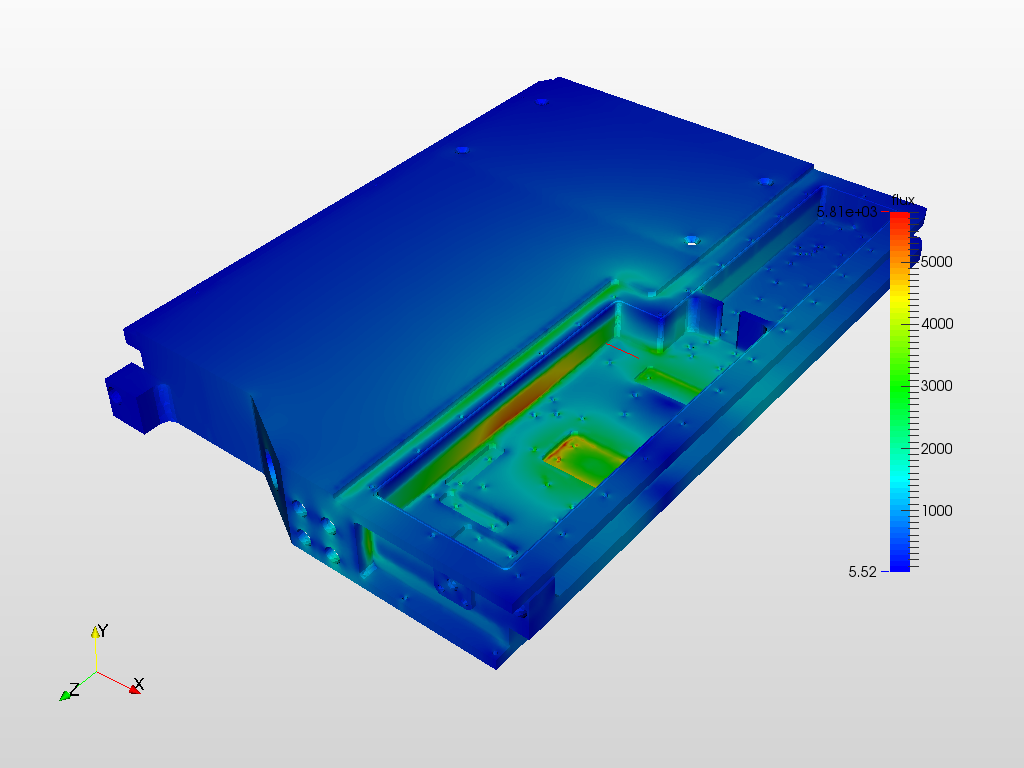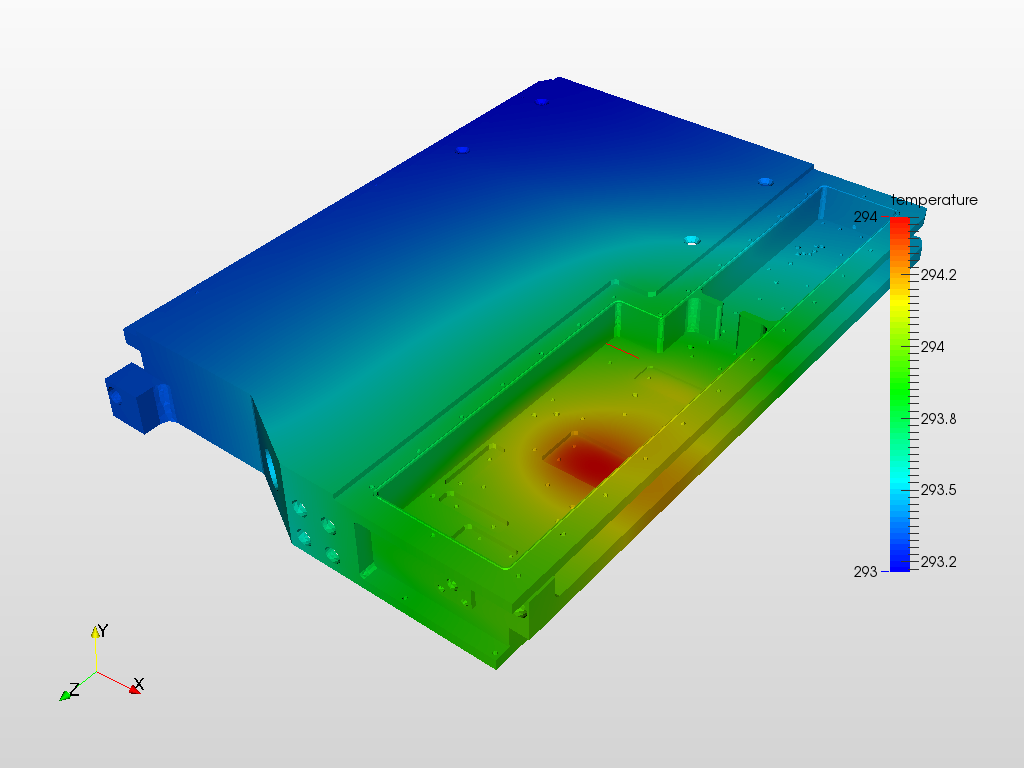Thermal analysis of electronics devices, an introduction
Why carry out thermal analysis?
Thermal analysis can be a great way to help understand the thermal performance of your design before paying for costly costly prototypes or production models of your products design. Through Thermal Analysis, we can simulate the heat output from the components inside your product, as well as how well these components will dissipate heat throughout your enclosure.
What information can you gain (thermal stress, temperature plots, thermal resistance through a stack of materials)?
Through thermal analysis, we are able to gain information on the thermal performance of your electronic devices design. We can tell the estimated temperature for vital components on your PCB, as well as simulate airflow from any included fans to see how this will effect thermal performance. We can also use analysis to test various designs of enclosures, heatsinks, and fan positions to ensure you can achieve the most efficient design for heat dissipation.
What do you need to get started? (geometry, datasheets, environmental conditions & goal).
To get started, we would need an idea of the geometry, information on the environment and the desired outcome. We’ll go into this in more detail in future posts but for the time being, we’ll keep it simple.
Ideally, the geometry would be in 3D CAD format such as .STEP, .IGES or .parasolid but we work with Native formats too such as Solidworks, Autodesk Inventor, and Fusion 360. We can also translate 2D drawings and sketches into 3D models to be for analysis, thermally or otherwise.
If you have datasheets for the components and materials of interest it’s a big help. This could be just the components, used inside the enclosure, but can also include any standard parts such as fans, heatsinks and other hardware that will affect the result. If you don’t have this information part numbers, URL’s or even descriptions of the components and materials can suffice. This information helps us set up the model to be as representative of reality as possible.
Once we’ve defined the model’s environment we’re ready to consider the inputs and outputs on a case by case basis. One of the benefits of simulating the performance of a model is that you’re able to look at multiple cases using the same setup. Things like, how does my system perform at temperature extremes, or what happens if our cooling system fails can be as simple as new cases for analysis. The boundary conditions allow us to consider multiple cases and report the effect of these scenarios on the performance of the system.
Some inputs would include;
Device power dissipation/heat generation
External radiation
External temperature
Some outcomes would include;
Temperature
Heat flux density
Stress
Displacement
Once we’ve defined the geometry, boundary conditions and required outputs, we’re good to go.
How long does it take?
This is a challenging question to answer without any context. Generally speaking, thermal analysis is a less resource-intensive method than compared with other types of FEA or CFD because the models are simpler (fewer degrees of freedom). As complexity increases, larger models with multiple materials/contact conditions, temporal in the case of transient studies, or multiphysics in the case of conjugate heat transfer things can get more challenging. Simple single device studies typically take a couple of hours to set up and solve, more challenging studies with larger more complex geometries may take many days, weeks or even months to set up and solve.
What software do you use?
We use a number of different packages depending on the task at hand. This includes but is not limited to Fusion 360, Solidworks, SimScale and Ansys. We understand the features and limitations of the tools we use and always aim to pick the best tool based on the outcome required.
What are the applications?
Thermal analysis has wide-ranging applications across many sectors. Here’s a couple of applications where we’ve applied the process, to give you an idea of its use;
Solid-state power amplifiers (SSPA’s) onboard telecommunication satellites
Heating elements used in medical devices
Electric motors and generators used in automotive propulsion systems
Interested in learning more about the applications of thermal analysis on your project, want to discuss how to get started or need advice on effective use of simulation in your development process. Get in touch to see how we can help!






